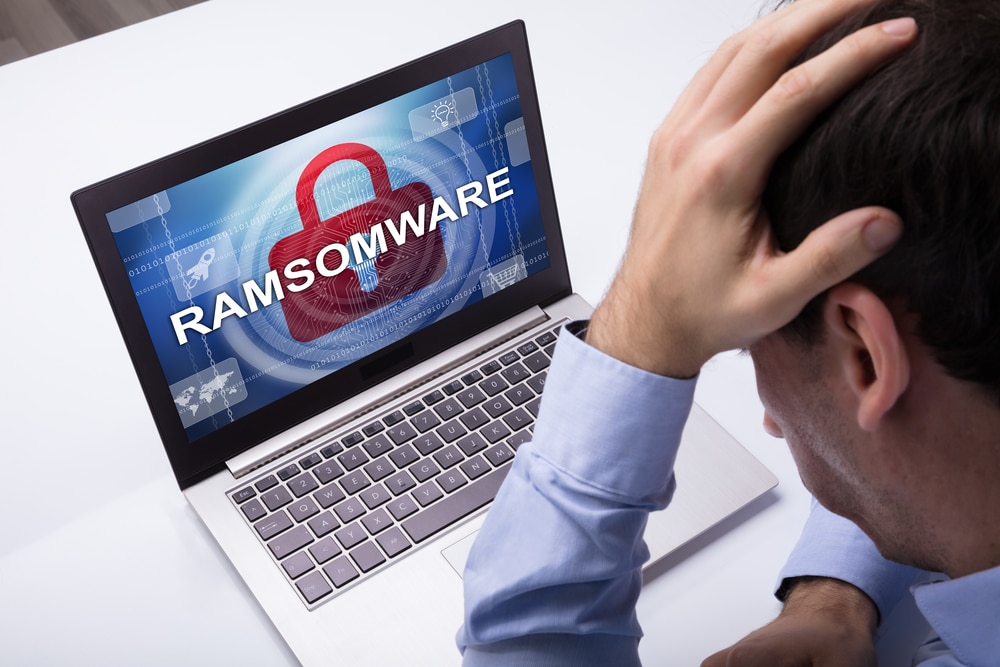
The best open banking apps in 2021
Open banking is more than just a buzzword -- the emerging trend is reshaping traditional services and may become the industry’s future.
Through the use of application programming interfaces (APIs), third-party financial service providers (TPPs) can access customer data that would otherwise be kept secure. Some of these services include budgeting, comparing mortgage rates, creating savings portfolios and more. TPPs are growing in number due to the open banking revolution.

The quest for truly integrated digital services
When you first start out on a digital improvement program, it’s important to get buy-in from senior stakeholders. Of course, the reality is that this isn’t always as easy as it seems. To navigate any preconceptions at Chesterfield, we decided to badge our project as an ICT improvement program, and the main reason for doing this was to secure support from Councillors.
We also decided to split the program into two with one workstream focusing on infrastructure and networks and the other looking at business process improvement. The main goal of the program is to remove technical debt, data silos and any difficulty with case management. No more duplication and time-consuming inefficiency and not being able to see the full picture.

How tech has helped bring us together despite being further apart
The past year has seen us become more isolated than ever before. With multiple national lockdowns and stay-at-home orders issued, we’ve ended up spending most of our time within the same four walls. Whether we’ve worked or socialized from home, we’ve been far away from the people we know and love.
Though it’s often criticized for damaging real-life relationships and interactions, technology has replicated some of the experiences we’ve missed out on. Businesses have hosted virtual meetings and conferences, we’ve taken part in Zoom pub nights, and our favorite performers held virtual gigs. Of course, this technology can’t replicate some of our in-person experiences. But imagine how much more we’d have struggled without these digital options.

The electric vehicle revolution: How our homes are driving the green transition
Electric vehicles are driving the UK’s green transition, helping the nation on its journey towards sustainability and net zero emissions by 2050. To achieve this goal, the sale of new petrol and diesel cars will be banned after 2030, meaning that the future roads are guaranteed to look more electric.
But with the increase of electric vehicles comes the issue of charging. Of course, it makes sense that we should all be able to charge our cars at home. Nipping to the petrol station during the rush hour commute will be no more, as recharging will be done on our doorsteps. But do you have an electric vehicle charger at your home yet? The answer is most likely no. After all, we’ve not had much use for them up until now.

AI's emergence in strategic business functions: Is procurement getting left behind?
50 percent of respondents to a recent McKinsey survey reported that their companies adopted artificial intelligence (AI) in at least one business function in 2020. As interest and investment in AI and machine learning (ML) continue to grow across different business functions, is Procurement keeping pace with its business unit counterparts?
Procurement value generation is heavily dependent on fast access to accurate data; while other business functions are automating decisioning using AI, in many organizations today Procurement is still working manually just to collect and clean source data before even getting to the decisioning stage.

Understanding the economics of cloud: Four guiding principles for evaluating your cloud investment
COVID-19 has not only accelerated the move to cloud and the digital transformation journey, but it has also put cost reduction initiatives squarely in the limelight. Reducing costs has always been a top priority for IT departments but the pandemic has accelerated its importance over the past 12 months. In fact, according to Deloitte cost reduction initiatives have increased 74 percent since pre-COVID, with 40 percent of organizations planning to grow their cost reduction strategies in the next 12 months. However, undertaking a large-scale digital transformation with either a flat or declining budget is no mean feat.
To achieve this, organizations often look to the cloud, and it has become a common assumption that migration to the cloud translates to reduced costs. The reality though can be a very different story. In fact, without the right cloud provider, the true costs of cloud computing can add up fast. So how do organizations choose the best cloud provider for their business, and are hyperscalers like Amazon Web Services and Microsoft Azure good investments?

The three industries experiencing a technological revolution
If I asked you to think of an industry that has been revolutionized by technology, you’d probably have no problem answering. In fact, the more difficult question might be naming an industry that hasn’t experienced digital transformation, particularly in the past year.
It’s clear that some industries are more technologically advanced than others. Naturally, technology businesses including Apple, Microsoft, and Google are leading the way. Media, financial services, and energy providers are some of the most digitized sectors. Some sectors, meanwhile, are still in their digital infancy. But that’s about to change. Here, we detail three sectors that are on the cusp of a digital revolution.

Using technology to boost engagement in video meetings
Since the shift to virtual and hybrid working, we’ve all experienced some form of video fatigue. Whether it be back to back video meetings discussing different topics or enduring a meeting that has lasted well over an hour, the era of virtual meetings can be challenging and as a result can lead to unengaged attendees.
While these challenges may be hard to overcome and are a common problem for all, there are a number of different tools and technologies that organizations can implement to have a positive impact on productivity and engagement during video meetings.

Why businesses need reliable voice calling solutions
Historically, voice calling has been the default method for businesses to interact with their employees and customers. Although more modern communication mediums have entered the market and even evolved, traditional calling remains a valued resource for business collaboration and success. The growth of the distributed workforce has also driven a need for alternate ways for companies to connect, and voice calling, powered by VoIP, has become an even more critical communications lifeline.
During the past year, companies turned to collaboration tools for video conferencing and workflow support. However, voice calling is still a non-negotiable in a communications toolkit, with the VoIP market projected to surpass $95 billion by 2027. As companies determine which telecom and collaboration tools best meet the needs of their employees and customers, it will be important for IT decision makers to partner with a communications provider that offers reliable voice communications no matter what the future brings.

Tor Browser 10.5 is here... and it kills off support for older Onion services
Web users' interest in privacy and security has gradually increased over the years, and demand for secure, anonymity-offering browsers like Tor is also on the up. Now a new version of Tor Browser is upon us, introducing various protection methods.
Perhaps most apparent in Tor Browser 10.5 is the improved experience of connecting to Tor. While the Tor Network has undeniably rocketed in popularity, there are still plenty of people who like the idea of the security and privacy it offers, but feel uncomfortable with getting started. In particular, this latest version of the browser makes life easier for people forced to use censored connections.

Big data, big city transformations: Transport and well-being
As the world changes, so do our priorities. We are now needing to place human needs before technical needs when designing urban areas for the future. Sustainability is at the heart of these considerations as we look to include green spaces, utilize big data effectively, and introduce efficient travel. Technology is central to these ideas, particularly for the use of big data in smart cities.
In today’s society, governments and leaders are given a plethora of insights and data that improve how we live. Gathering such rich and useful information about built-up areas like cities is not only efficient and relatively quick but can work towards providing the best living conditions for residents as well as the environment and other species that inhabit it.

Secure web gateways are essential for the remote workforce
Originally designed to shield against malicious websites or unacceptable content, secure web gateways (SWGs) have evolved to become essential to enterprise security, especially for remote workforces. This is especially true since early 2020, when COVID-19 created millions of remote workers almost overnight.
The VPNs that were widely implemented as an early response to the worldwide health crisis allowed secure access to network resources but came with an impact on productivity and network throughput. Meanwhile, for remote workers connecting directly to SaaS and cloud-based applications and data, VPNs weren’t even part of the equation. The reality is, with business-critical apps and data residing outside the network perimeter, remote users need access to these resources from anywhere.

Is your business being targeted by cryptojackers?
Thanks in no small part to Tesla CEO Elon Musk, Bitcoin, Dogecoin and other cryptocurrencies have become much more widely known, but not necessarily understood.
Recent booms and burst bubbles have exposed how volatile, speculative and easy to manipulate those cryptocurrencies are, not to mention the environmental concerns attached to how they are mined.

Promising trends in the serverless infrastructure market
The serverless infrastructure, which enables cloud-native application development without the need to manage servers, is growing. According to market research, it is set to grow into a $21.9 billion market by 2025 from $7.9 billion in 2020. This growth affects several sub-markets including API management, app design and consulting, analytics, monitoring, automation, integration, and security.
Another study estimates that the serverless market grew three times in 2020 compared to 2019. This study focuses on the growth in AWS Lambda (most mature and widely used), Azure Functions, and Google Cloud Functions. Also, it was observed that serverless framework downloads hit 25 million in 2020, up from 12 million in 2019.

How to mitigate ransomware attacks
Ransomware attacks are a type of cybercrime where hackers will use malware to encrypt computer (or network) files, locking users out of the system until a ransom is paid to a cybercriminal. Ransomware attacks have been around since the mid-2000s but they’ve made recent headlines as attacks against Colonial pipeline and the U.S. meat industry have shown that they are more than just a technology challenge, and can also significantly disrupt everyday life.
Between ransoms paid and lost productivity, ransomware attacks cost U.S. businesses an estimated $2.3 Billion in 2020 alone. The disruption caused by the COVID-19 pandemic, the popularization of cryptocurrency as a ransom payment, and support (or lack of prosecution) from foreign states have created an ideal environment for ransomware attacks to flourish.

